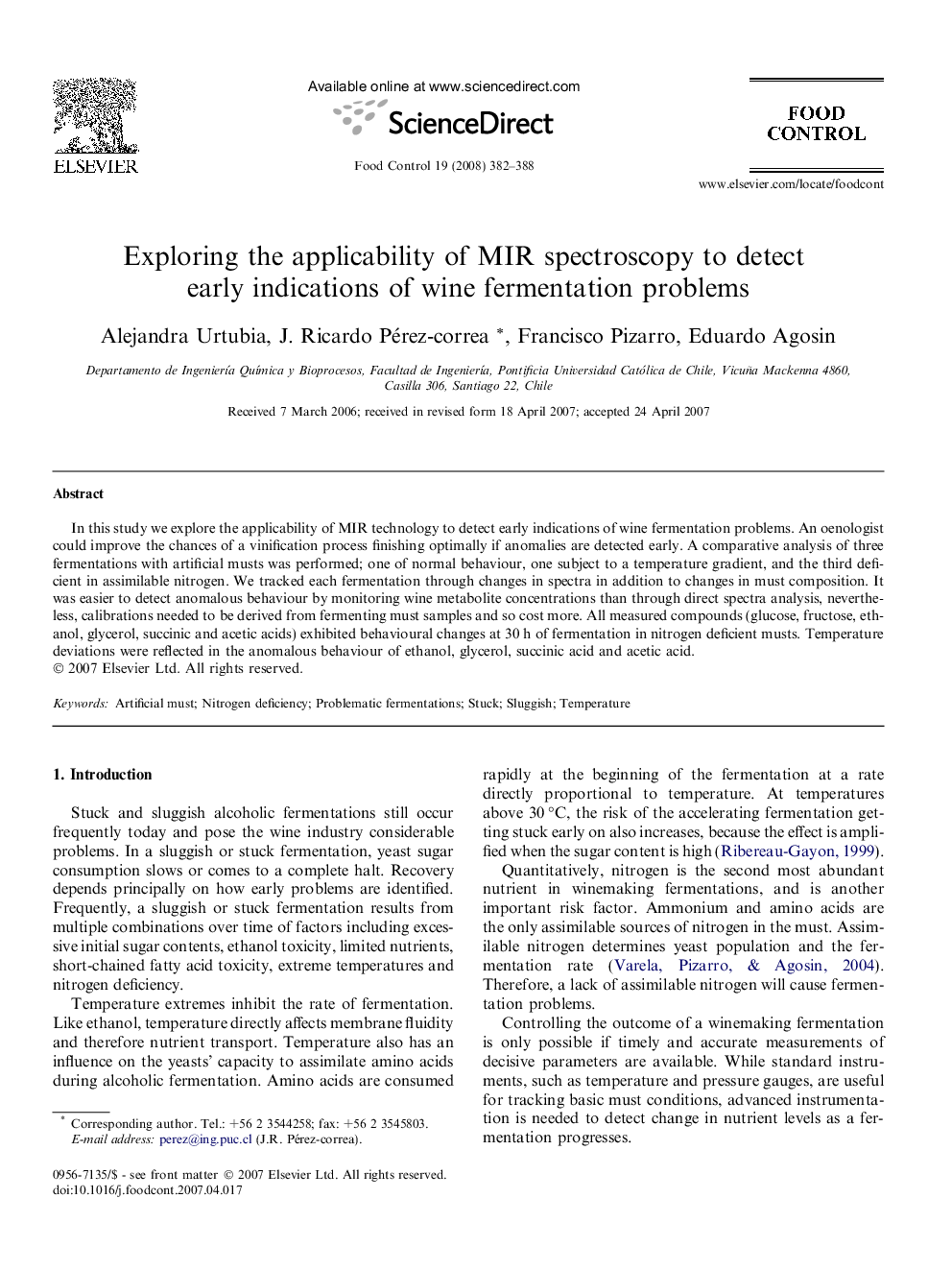| Article ID | Journal | Published Year | Pages | File Type |
|---|---|---|---|---|
| 4560561 | Food Control | 2008 | 7 Pages |
In this study we explore the applicability of MIR technology to detect early indications of wine fermentation problems. An oenologist could improve the chances of a vinification process finishing optimally if anomalies are detected early. A comparative analysis of three fermentations with artificial musts was performed; one of normal behaviour, one subject to a temperature gradient, and the third deficient in assimilable nitrogen. We tracked each fermentation through changes in spectra in addition to changes in must composition. It was easier to detect anomalous behaviour by monitoring wine metabolite concentrations than through direct spectra analysis, nevertheless, calibrations needed to be derived from fermenting must samples and so cost more. All measured compounds (glucose, fructose, ethanol, glycerol, succinic and acetic acids) exhibited behavioural changes at 30 h of fermentation in nitrogen deficient musts. Temperature deviations were reflected in the anomalous behaviour of ethanol, glycerol, succinic acid and acetic acid.
